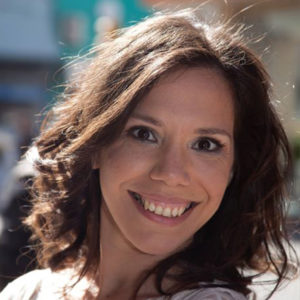Diploma Programme (DP) graduate and IB educator Cecilia Villavicencio offers advice to DP coordinators as they look to bridge connections and inspire new interdisciplinary insights for their students. This is her second story in our graduate voices series.

As a Diploma Programme (DP) grad with years spent as an IB educator and the perspective of experiencing deadlines from both sides, I asked myself, “What if some of the uncertainty in the programme for teachers and students has to do (at least a bit) with lack of intentional planning?” I am not saying DP teams do not plan or use their collaborative planning time effectively: I am thinking of a deeper understanding of the DP with a 3D-vision, that can improve time management across the subjects and the core. Concurrency of learning is the big concept I use the most to envision the idea of a holistic experience, in which everything happens at the same time and by which the programme is understood as much more than the sum of its parts. I will share three big ideas to look at the programme from a holistic perspective.
A concept-based approach
“It can be helpful to build on previous knowledge”
Yes, I know, many subject guides are still content-oriented. And, yes, your DP team has a lot of content to teach. But, these guides—as the new ones become available—are also adding the concept-based approach that has lived in the Primary Years Programme (PYP) and the Middle Years Programme (MYP) for a long time now. How do concepts help us save time and, in addition, sophisticate the understanding of the subjects? “Three-dimensional models focus on concepts … using related facts and skills as tools to gain deeper understanding of disciplinary content. [They] value a solid base of critical, factual knowledge across the disciplines, but they raise the bar for curriculum and instruction by shifting the design focus to the conceptual level of understanding”[i]. You can create a Venn diagram to show evidence of the intersections from key concepts from the DP subjects offered at your school. And the fact that your subjects actually share concepts is a first step to succeed in the promotion of this approach. It can be helpful to build on previous knowledge, if the concept was already dealt with in MYP!
Curriculum mapping
“Visualize what is being taught to their students at the same time, across subjects”
Gather all the DP team with their written curriculum at hand. Ask them to produce a poster in which they will include the name of the units they plan to teach in year one and the units they plan to teach in year two of the programme―you may ask them to also include time references, such as terms or lessons. Organize a gallery walk with all these posters and make them visualize what is being taught to their students at the same time, across subjects. Is there an order that needs to be changed so that students know something before another subject deals with it? What is my colleague teaching at the same time as me? What links can I create by being aware of what my students are studying in my neighbor subjects? Should I change my literature choices to match their history option? What if everything (or at least a lot more) makes more sense with these changes?
Create patterns with the command terms
“For the DP team, a 3D-vision will contribute to the sense of community in the programme and also in our teams!”
In addition to developing commonalities with concepts, command terms are another great way to build connections; they are terms with the same meaning across subjects. Create a table to show how command terms are used by subject, and make sure the abilities to answer those terms are built in across all subjects in a consistent way (check the last pages of the subject guides!). You can even start working with them with students before the DP, so they know how to react to them from an earlier age.
DP coordinators work to make students and teachers’ lives easier and I think these tips make it easy for us too. I love the DP so much that I spend a lot of time studying and preparing new resources for my community’s deeper understanding to better implement the programme. For the DP team, a 3D-vision will contribute to the sense of community in the programme and also in our teams!

Cecilia Villavicencio is a Diploma Programme (DP) graduate from Instituto Santa Brígida in Buenos Aires―Argentina. In 2006 she became IB staff, in charge of the DP evaluation process in all American schools. In 2013, she became the DP coordinator at Colegio Internacional SEK-Ciudalcampo in Madrid―Spain. At present, she is head of academics at Colegio San Ignacio in Río Cuarto―Argentina.
To hear more from Diploma Programme (DP) graduates check out these IB programme stories. If you are an IB grad and want to share your story, write to us at alumni.relations@ibo.org. We appreciate your support in sharing IB stories and invite you to connect with us on LinkedIn, Twitter Instagram and YouTube!
If you enjoyed this story, consider reading more below:



